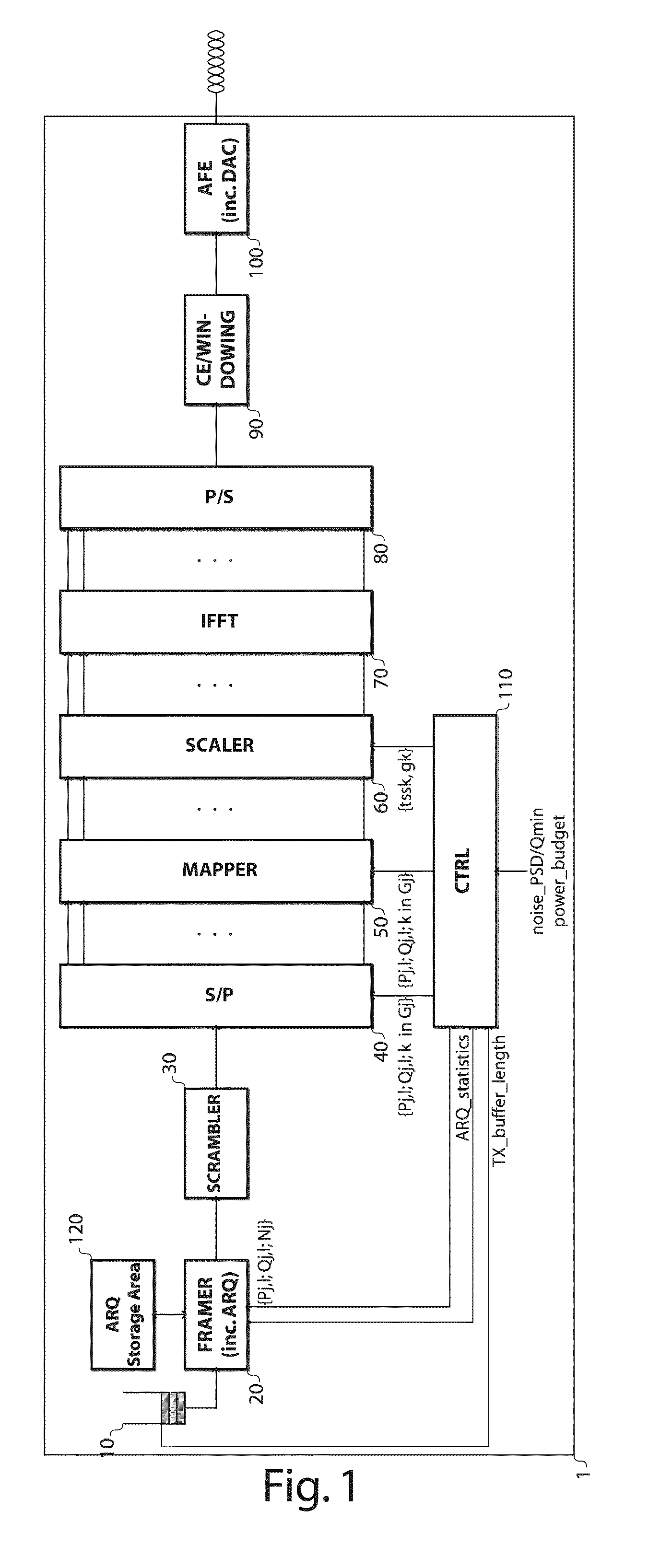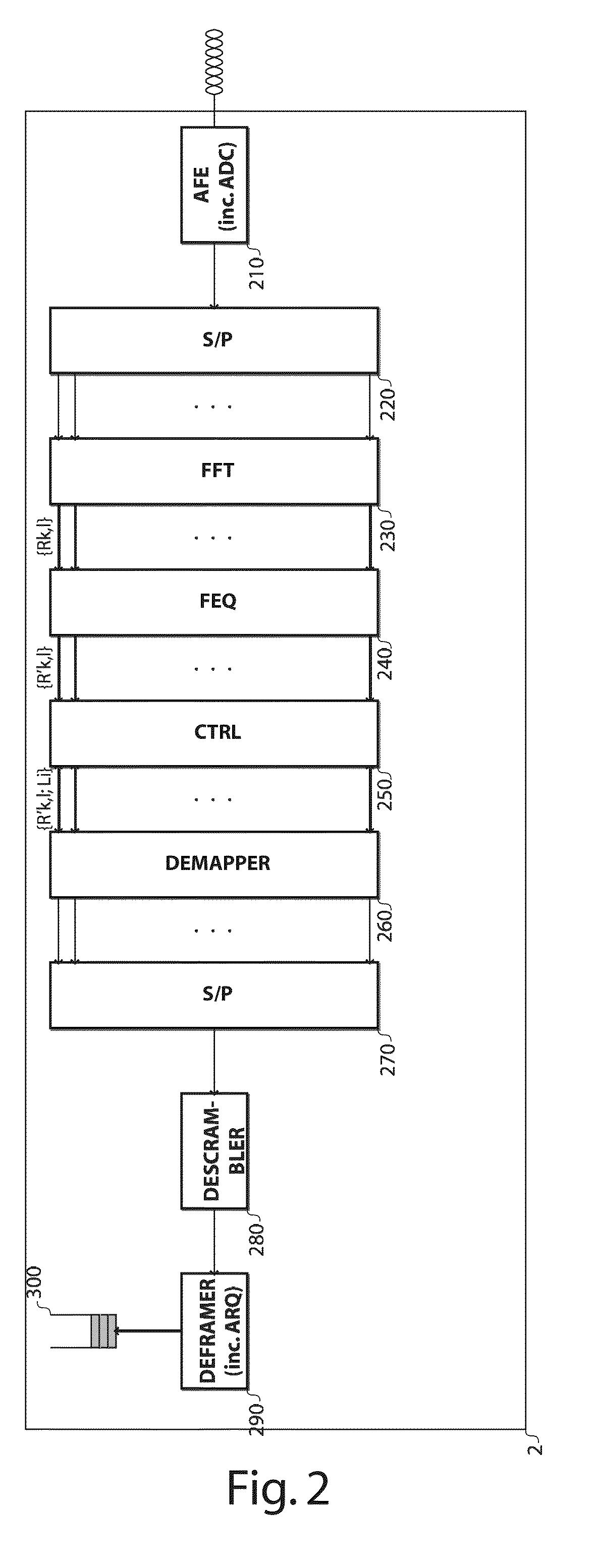Hierarchical and adaptive multi-carrier digital modulation and demodulation
a multi-carrier, digital modulation technology, applied in multi-frequency code systems, sustainable buildings, high-level techniques, etc., can solve the problems of inability to predict standardized mechanisms, insufficient robustness of digital subscriber lines (dsls) to resist transient noise, and inability to accurately estimate the effect of the number of users
- Summary
- Abstract
- Description
- Claims
- Application Information
AI Technical Summary
Benefits of technology
Problems solved by technology
Method used
Image
Examples
Embodiment Construction
[0067]The following terminology will be consistently used throughout the description:[0068]I denotes the maximum number of hierarchical modulation layers, or alternatively the maximum number of constellation vectors, that can potentially be used by the transmitter and the receiver;[0069]i denotes a modulation layer index, or alternatively a constellation vector index, ranging from 0 to I−1;[0070]Li denotes a particular modulation layer characterized by a particular predefined transmit power;[0071]J denotes the total number of carrier groups;[0072]j denotes a carrier group index ranging from 0 to J−1;[0073]Gj denotes the carrier group with index j;[0074]Nj denotes the number of carriers within the carrier group Gj;[0075]K denotes the total number of carriers;[0076]k denotes a carrier or frequency index ranging from 1 to K;[0077]l denotes a transmit or receive multi-carrier data symbol index,[0078]Vi,k,l denotes the transmit constellation vector at frequency index k for modulation lay...
PUM
 Login to View More
Login to View More Abstract
Description
Claims
Application Information
 Login to View More
Login to View More - R&D
- Intellectual Property
- Life Sciences
- Materials
- Tech Scout
- Unparalleled Data Quality
- Higher Quality Content
- 60% Fewer Hallucinations
Browse by: Latest US Patents, China's latest patents, Technical Efficacy Thesaurus, Application Domain, Technology Topic, Popular Technical Reports.
© 2025 PatSnap. All rights reserved.Legal|Privacy policy|Modern Slavery Act Transparency Statement|Sitemap|About US| Contact US: help@patsnap.com



